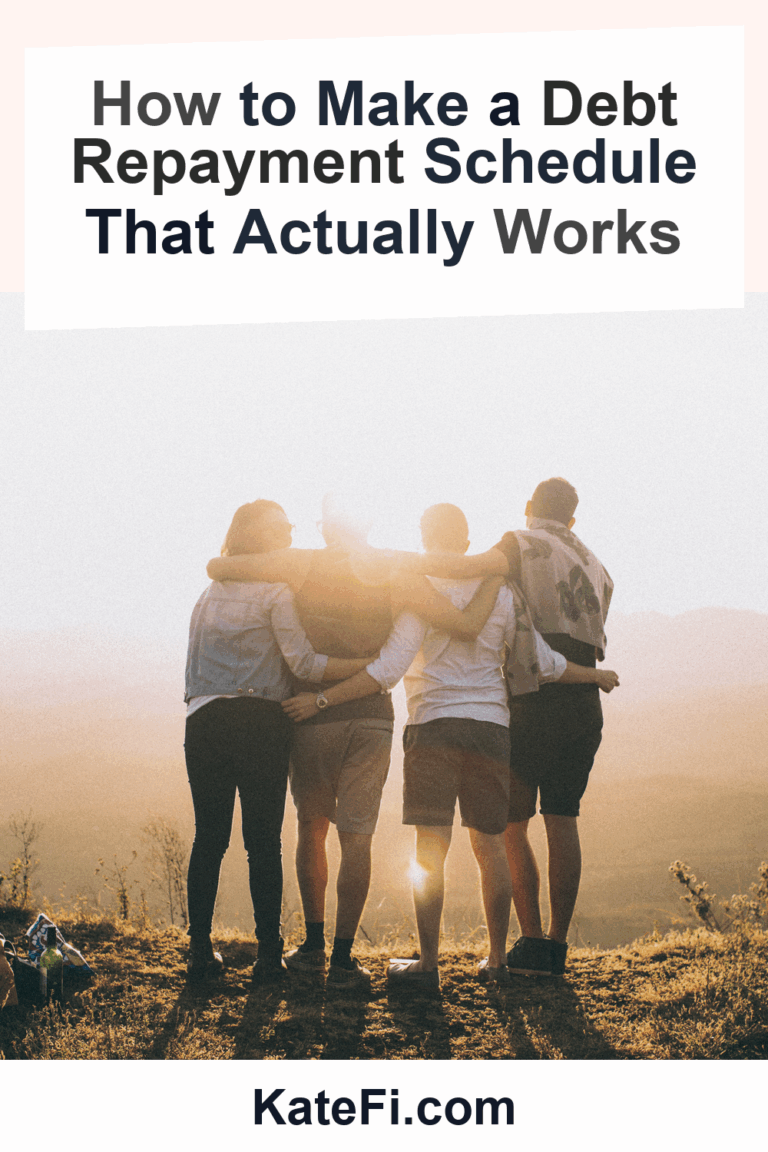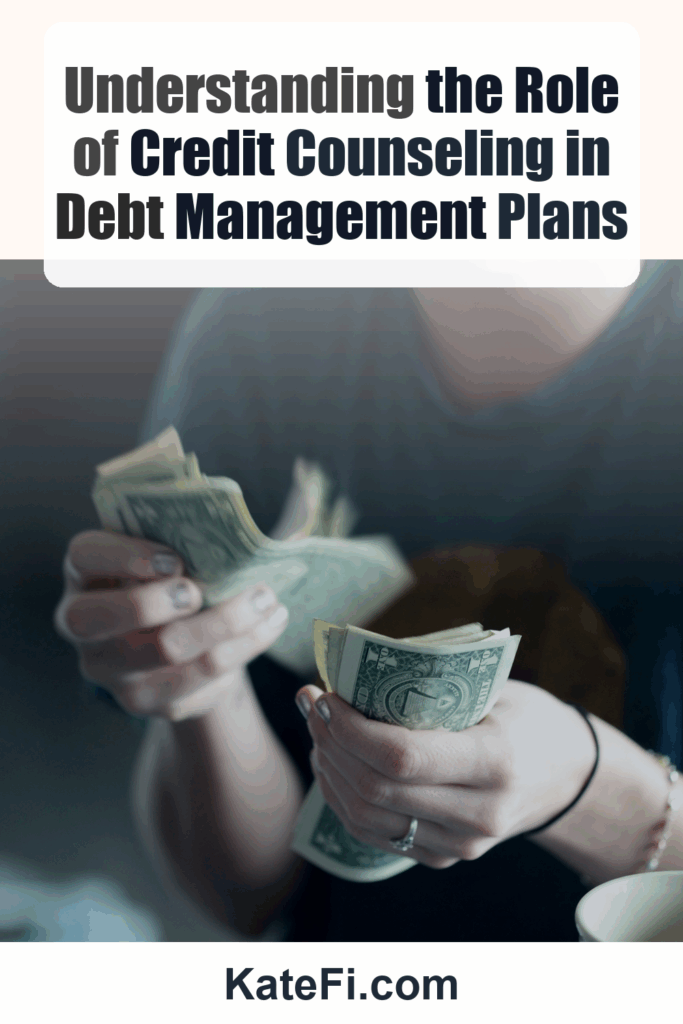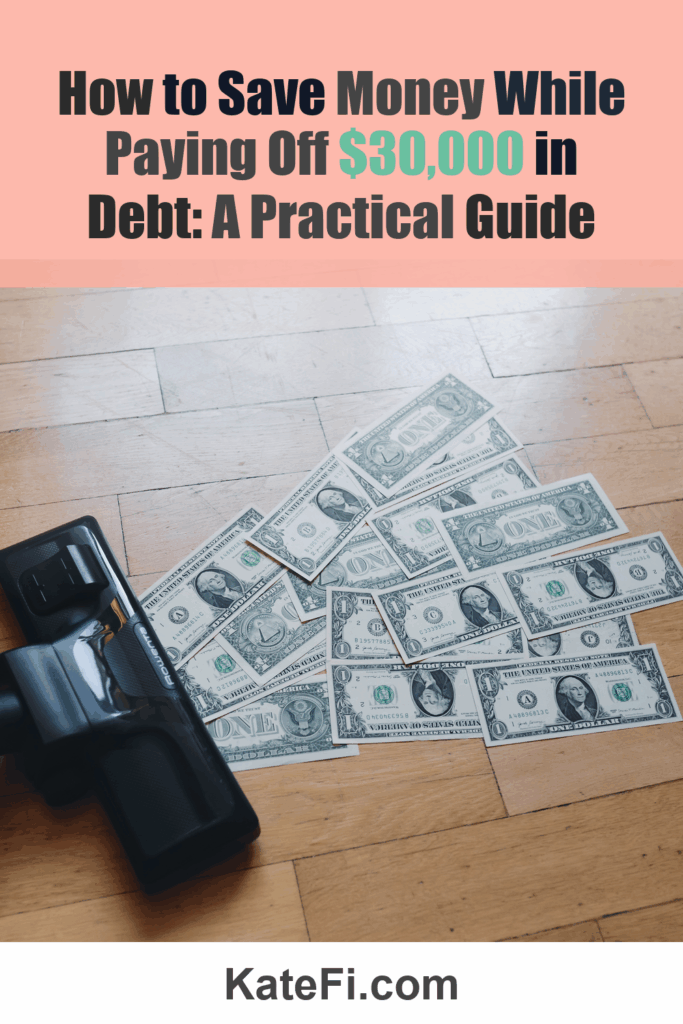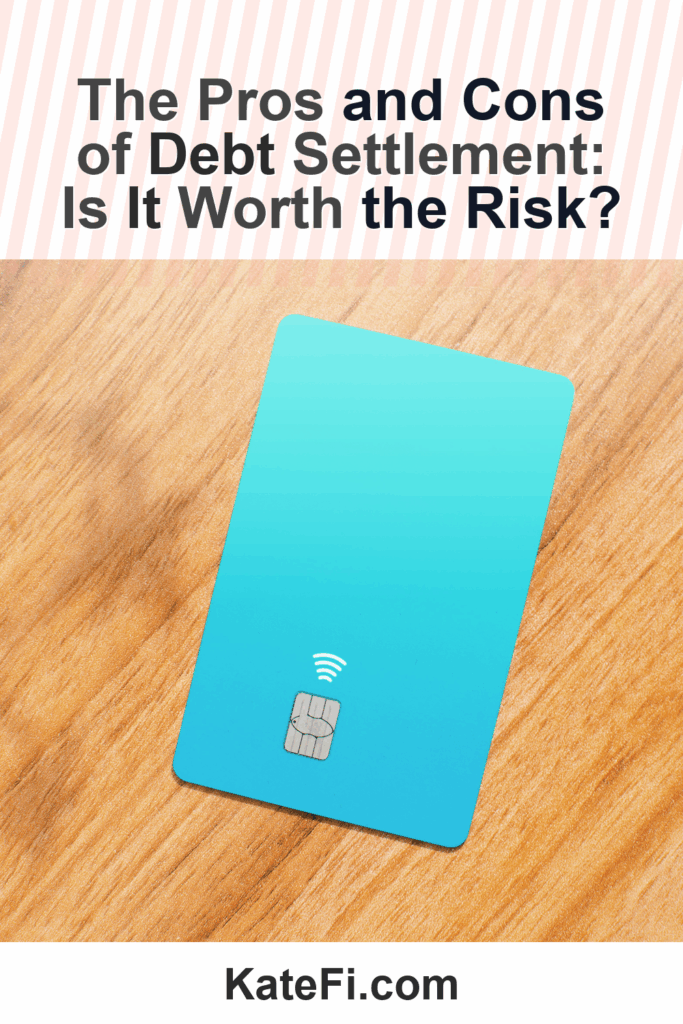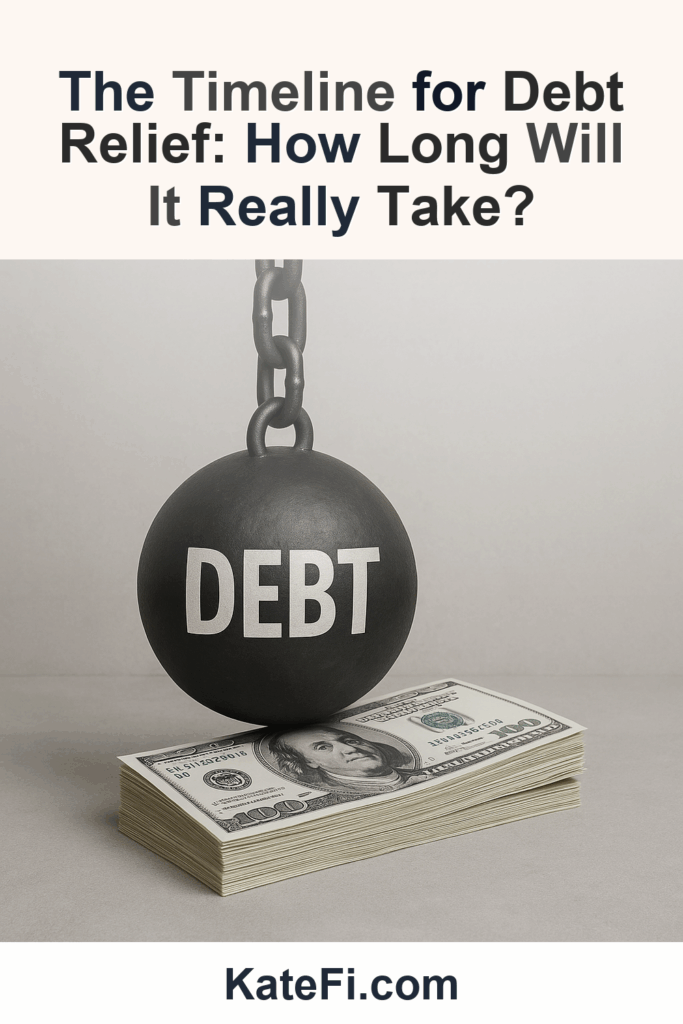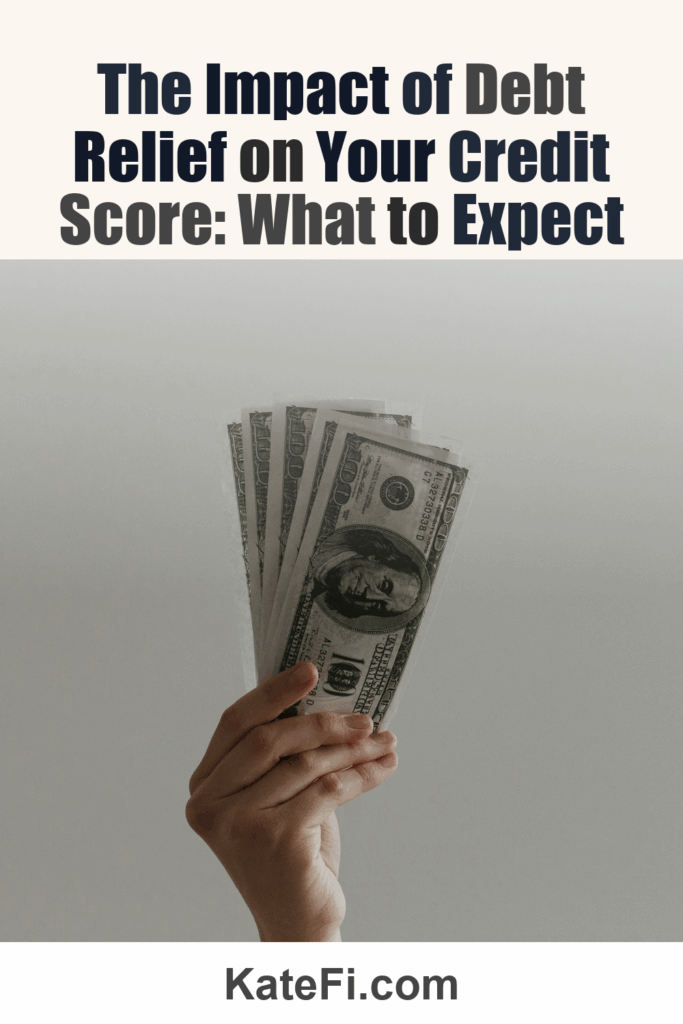How to Make a Debt Repayment Schedule That Actually Works
Finding yourself deep in debt can feel overwhelming, but creating a debt repayment schedule is a crucial step toward financial freedom. The good news is that with the right approach, you can tackle your debts efficiently and with less stress. By incorporating side-income micro-wins into your strategy, you can speed up the repayment process. Here’s a comprehensive guide on how to build a debt repayment schedule that not only works but helps you make progress every step of the way.
Love our content? Show your support by following us — pretty please!🥺
FOLLOW ON PINTEREST
Hi! I’m Kate, the face behind KateFi.com—a blog all about making life easier and more affordable.
1. Gather Essential Documents
👉 Start Your Free Debt Relief Review
Not available in IL, KS, OR, TN, UT, WV.
Before diving into the nitty-gritty of your repayment schedule, it’s vital to collect all the necessary documents that will inform your financial decisions. This step ensures that you have a clear picture of your current situation.
Checklist:
- Recent credit report
- Current account statements for all debts (credit cards, loans, etc.)
- Income statements (pay stubs, tax returns)
- Monthly budget (track your expenses)
- Any legal documents related to your debts
The better prepared you are, the easier it will be to formulate a solid repayment plan.
✅ See If You Qualify for Debt Relief
2. List All Your Debts
What You’ll Learn on the Call
- Estimated timeline and monthly payment range
- How credit may be affected in the short term
- What documents to gather to move faster
Not available in IL, KS, OR, TN, UT, WV.
Once you’ve gathered your documents, the next step is to create a comprehensive list of all your debts. Be sure to include:
- Creditor name
- Total amount owed
- Minimum monthly payment
- Interest rate
Having this information in one place allows you to visualize your debt landscape, making it easier to identify which debts to tackle first.
3. Choose Your Repayment Strategy
Lower Your Unsecured Debt
If you have $5,000+ in credit card or personal loan debt, a free consult can review options like settlement or hardship plans.
- One-on-one call to review your debts and goals
- See potential monthly payment reductions
- No obligation to enroll
Not available in IL, KS, OR, TN, UT, WV.
There are various strategies you can employ for your repayment schedule. The two most popular methods are:
- Debt Snowball Method: Focus on paying off the smallest debts first while making minimum payments on larger debts. This can boost your motivation as you celebrate small wins.
- Debt Avalanche Method: Concentrate on the debt with the highest interest rate first. This method minimizes the amount of interest you’ll pay over time but may lack the motivational boosts of the snowball method.
| Method | Pros | Cons |
|---|---|---|
| Debt Snowball | Quick wins, motivation boosts | Potentially more interest paid |
| Debt Avalanche | Less total interest paid | Slower emotional gratification |
Choose the method that resonates with you, or a hybrid approach that combines both strategies.
✅ See If You Qualify for Debt Relief
4. Incorporate Side-Income Micro-Wins
Side-income micro-wins are small amounts of money you can earn on the side to help pay off your debt faster. Here are some actionable ideas:
- Freelance Work: Offer your skills on platforms like Fiverr or Upwork.
- Sell Unused Items: Use apps like Poshmark or eBay to declutter and make money.
- Gig Economy Jobs: Consider driving for Uber or delivering food through DoorDash.
- Online Surveys: Websites like Survey Junkie pay for your opinions.
- Rent a Room: Use Airbnb or rent out a parking space for extra cash.
Checklist:
- Identify skills or items you can monetize
- Set a monthly target for side income
- Track your earnings separately to see the impact on your debt repayment
The extra cash flow can be earmarked for higher payments on your debts, allowing you to accelerate your path to financial freedom.
5. Create a Monthly Budget
To make your repayment schedule work, you’ll need to create a realistic monthly budget. Ensure you allocate enough towards debt payments while still covering your essential living expenses.
Budgeting Tips:
- Categorize your expenses (fixed, variable, discretionary)
- Identify areas where you can cut back
- Set a debt repayment goal in your budget
- Revisit and adjust your budget monthly to track your progress
The more disciplined you are with your budget, the faster you will see results.
✅ See If You Qualify for Debt Relief
6. Set Specific Payment Goals
Setting specific, achievable goals can significantly enhance your debt repayment schedule. Here’s how to break it down:
- Short-term Goals: Pay off one small debt within the next 3 months.
- Mid-term Goals: Reduce overall debt by 30% in the next 6 months.
- Long-term Goals: Be debt-free within 2 years.
Make sure your goals are SMART: Specific, Measurable, Achievable, Relevant, and Time-bound. This will give you something concrete to strive for, keeping you motivated along the way.
7. Track Your Progress
Keeping an eye on your progress is crucial for maintaining motivation and ensuring your repayment schedule is effective. Consider using a spreadsheet or financial tracking app to monitor:
- Payments made
- Remaining balance
- Interest saved
Seeing how far you’ve come can spur you to keep going, and recognizing micro-wins along the way can boost your morale significantly.
8. Adjust As Necessary
Life is unpredictable, and circumstances can change. Whether it’s an unexpected expense or a new opportunity for extra income, be prepared to adjust your repayment plan accordingly. Regularly reviewing your budget and payment strategy is essential.
- Monthly Reviews: Set a date each month to evaluate your financial situation.
- Emergency Funds: Build a small emergency fund to avoid derailing your repayment efforts.
- Adjust Goals: If you meet a goal, set a new one. If not, analyze what went wrong and tweak your approach.
✅ See If You Qualify for Debt Relief
9. Consider Professional Help
If you find yourself struggling, it may be time to seek professional assistance. Debt relief services can offer guidance tailored to your situation. Many individuals find that a free consultation can provide valuable insights into their options.
Remember, results and eligibility vary based on your unique situation and state, so it’s essential to consult professionals like those at KateFi.
Impact on Credit
It’s also important to understand that your debt repayment efforts can impact your credit score. Missing payments or accruing additional debt can lead to lower credit scores, while successfully paying down debts can enhance your credit profile over time. Be mindful of your payment timelines and communicate with creditors if you’re struggling.
Important: This content is for education only—not legal, tax, or financial advice. Results and eligible programs vary by situation and state. Fees apply if you enroll and complete a program. Debt relief can affect credit; missed payments may lead to collections/lawsuits. Not available in IL, KS, OR, TN, UT, WV.
In summary, making a debt repayment schedule that works is about preparation, consistency, and adaptability. By gathering the right documents, choosing a repayment method, incorporating side-income micro-wins, and tracking your progress, you’ll be on the road to financial freedom in no time.
So why wait? Contact KateFi today for a free consultation to explore your debt relief options and take the first step toward a debt-free life!

